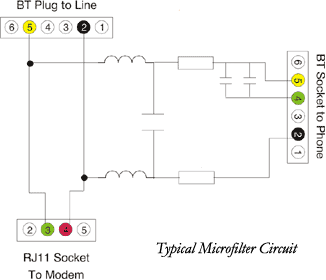How often can you be sure that that is the cause?
In most cases it's really obvious - in some cases just by visual inspection ! Though I suppose you can argue that it makes little difference whether it's the phone line changing voltage relative to the mains, or vice versa.
In one case, it was clear that the phone line was part of the circuit by the physical damage to the modem in the laptop and where it had arced over to the main board.
More typically, it's equipment that is connected to both mains and phone (computer modems, fax machines, answering machines, etc) line is blown - but nothing connected to just mains or just phone line isn't. Some senior managers got through quite a few fax machines !
The "attack" mode is a strike in the vicinity of either phone lines or mains that creates a common mode voltage on the line. The phone lines are more vulnerable - the mains has both a much lower impedance, and also surge protection in various places, not to mention the step down transformers between large parts of the network and the end user, and then the equipment itself is designed to accept at least 340V during normal operations. If something doesn't have a complete circuit then it tends to survive (unless it's bad enough that parasitic/capacitive routes can pass enough current) - eg a basic phone survives because the whole thing rides up with the incoming voltage but there's no path for any current.
Provide a circuit (eg because it's plugged into the mains for power) and then you are reliant on the strength of isolation - which usually isn't up to handling lightning level events.
I've also first hand experience with serial links and earth potential differences. Where I used to work, I think it's something like 20 years ago now, the report came back along the lines of "it went really dark, there was a h**l of a bang, now there's a burning smell from the computer room". At the time, their main computer system was a small Unix box with 64 (4off 16 port units) serial ports connected to terminals and printers around the building. 3 of the 4 units were "dead" - one with melted case. There was a direct correlation between location and damage incurred for the equipment on the other end of the links.
Within the office, many devices were blown - but the Wyse60 terminals were mostly repairable by replacing the serial driver chips (I vaguely remember them being 1488 and 1489 devices) which conveniently acted as a sacrificial fuse. By the time we got to the other building, they were toast as enough energy got through the 1488 & 1489 chips to kill other stuff. The "other building" was literally a few feet from the main building, and from the same on-site substation. I concluded that there had been a ground strike near to the building, causing massive voltage gradients in the earth, and with the electrical earth in each building linked to real earth by all the steelwork in the ground and with electrical gear bolted to it.
Of course, in this case it is possible that induced current in the conductors was a factor ...
It's a specialised field and I only know enough to know how much there is to know. But general advice is to create a protected zone with nothing conductive going through the boundary without having "proper" protection. That ideally means routing all circuits via a small physical location so you don't have long cables between them. If the phones come in at the back of the house, and the mains at the front, then the temptation is to put a surge protector where the phone line comes in, and run an earth lead to the MET - this is bad practice as even a thick earth wire has considerable impedance when you throw a spike the rise time of a lightning strike at it. Better to run the phone line to near the MET so all the surge protectors are very close together - the earthing of the MET may be "weak", but there aren't large differential voltages between different circuits/components.
By way of illustration, back when I started as an apprentice, we had a short session on noise and filtering - different but with some common issues/fixes. They'd setup a demo with a small DC motor fed through a very expensive* filter earthed to the alli panel with about a foot of very stout earth braiding. The filter was ineffective as the earth braid was too high an impedance to the noise - as an amplifier attached to the DC supply demonstrated. To show it was this, the instructor just pushed on the filter and flexed the J mounts* till the filter was directly earthed - and the noise stopped.
* This was an establishment making "bespoke vessels" for her Maj




